Inspired by our founder
Two members explain how Sir Peter Scott propelled them into conservation.
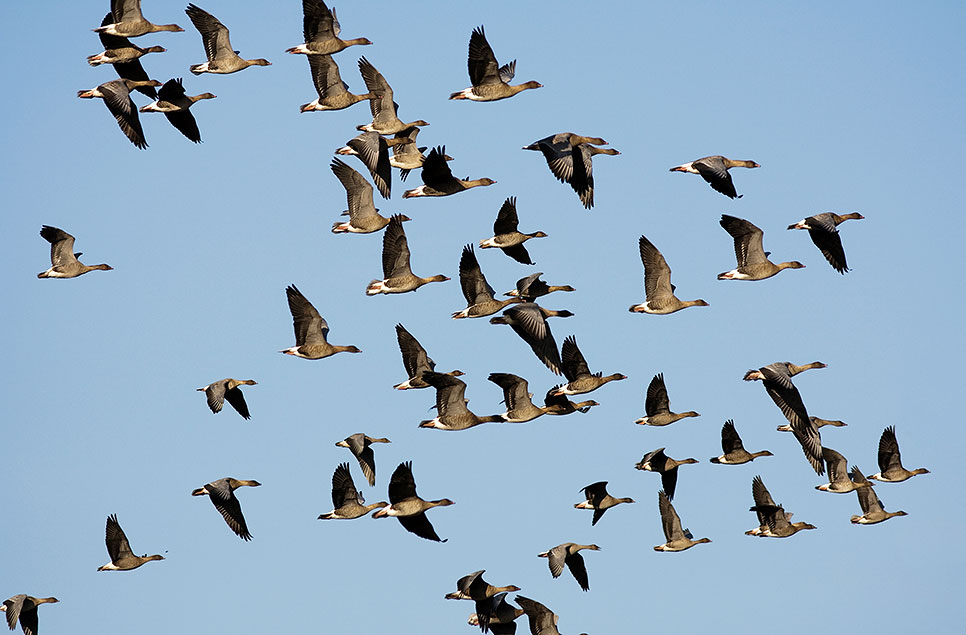
Greased treacle and custard
Mike Brookes on an encounter that set him and his wife on the path to lifelong campaigning for wildlife.
Nearly 40 years ago, my wife Anne and I were just getting into birdwatching and paid a visit to Slimbridge. As we entered the main reception hide, with its panoramic windows and individual chairs, from nowhere Sir Peter Scott was suddenly by our side. Somehow he seemed to know we had just signed up and were relative novices. He motioned us to take a seat with the advice to “move like greased treacle”. Somewhat overawed, and nervous about making a good impression, I made an awful hash of things whilst trying to sit down slowly by grating my chair horribly on the hard floor. Unfazed, Sir Peter began to show us the birds. He taught us how to recognise different species of wildfowl, including ducks which at that time we would jokingly complain “all looked the same”. We learnt that a wigeon has a generous daub of custard on its head, and individual Bewick’s swans could be distinguished. We saw what is now my favourite duck, the elegant pintail.
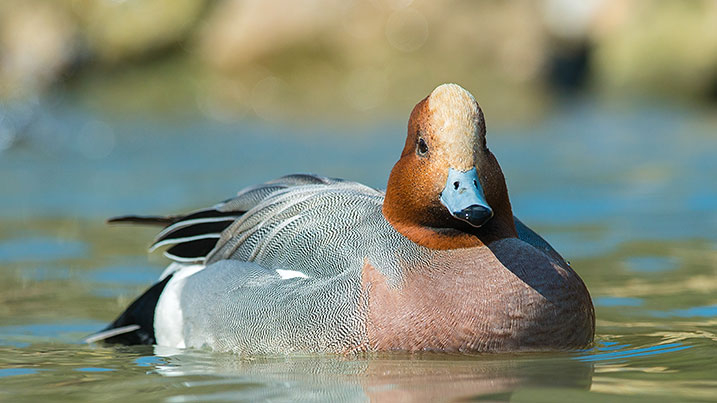
Inspired by Sir Peter, we continued on our lifelong journey with birds and wildlife. We joined societies, made new friends, volunteered for barn owl box monitoring and became citizen scientists with the BTO. More recently we have included activism, attending marches and rallies, writing letters and participating in consultations on biodiversity and climate change issues.
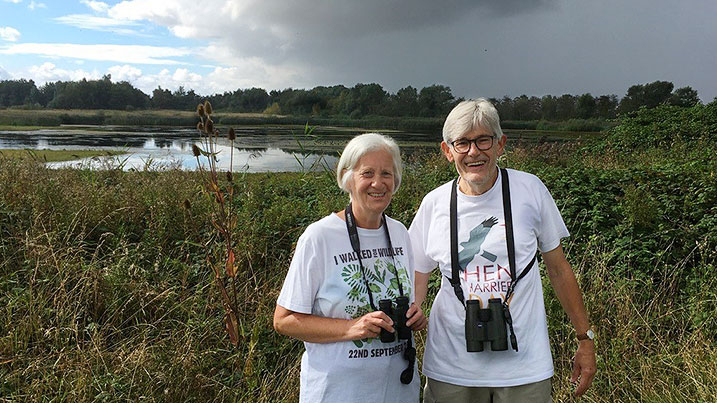
The Government is currently seeking to challenge the right to protest by preventing protestors from making too much noise; I am not sure what Sir Peter would have made of this. I am sure however that he would have approved of the Walk for Wildlife on 22nd September 2018, when thousands of us walked the streets of London to only the sound of wild birds downloaded on our mobile phones.
Sir Peter’s advice to move gently and quietly has remained with us over the decades, when birdwatching, respecting hide etiquette, or protesting for change. Whether reconnecting with nature, sharing knowledge with others or saving the planet, there is much to be said for moving quietly and treading lightly on our Earth - just like “greased treacle”.
Champagne and train robbers
Michael Potts became a professional conservationist, fuelled by a passion for wildfowl.
Peter Scott was a childhood hero of mine and visits to Slimbridge in the late 1950s ignited my passion for wildfowl, which still exists over 60 years later. My first professional association with the then Wildfowl Trust was in 1963, when I went to Slimbridge to work for several weeks in the collection before moving on to Peakirk in Lincolnshire. There, I spent two happy years working in the collection and also helping the late Tony Cook in the duck decoy at Borough Fen, ringing ducks for migration studies and ringing shorebirds on the Wash.
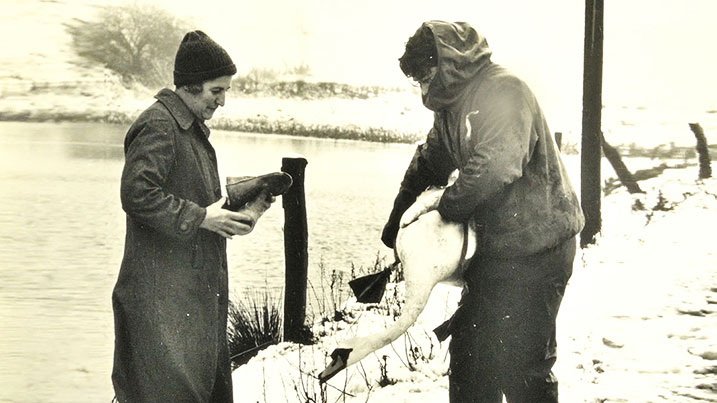
I joined the Wash Wader Ringing Group and I had the pleasure of working with Hugh Boyd, one of the Trust's first waterfowl biologists. On one field trip, based at a derelict cottage at Wisbech Sewage Farm, we were aiming to catch grey plovers for a Trust study. Very few had ever been caught and Hugh promised that if we caught more than 50 he would buy champagne for us all. In fact we caught over 70 and Hugh, true to his word, bought champagne. That evening back at the cottage there was much conviviality, bottles of champagne about the place, oil lamps lit the dingy rooms, piles of bird bags in the corners, sleeping bags. Then without warning the cottage was lit with a blaze of headlights. It was the day of the Great Train Robbery and someone had tipped off the police to say that strangers had been seen taking over this derelict cottage, carrying bags of something (cash or birds) and bottles of champagne into the building. Surely we must be the robbers? Fortunately it didn't take long to convince the police that we were not a violent gang of train robbers, merely innocent bird ringers celebrating a memorable catch.
My subsequent career in wildlife filmmaking began at the RSPB in 1978, and one of my first projects was to make a film on pink-footed geese, going to their wintering areas, as well as breeding sites in Iceland. Some of the filming was at WWT Martin Mere and on several occasions Dr Janet Kear provided on-site accommodation, which gave me access to the geese at dawn and dusk and during the night too. On one memorable occasion, Sir Peter and Philippa Scott came for lunch. The subject of geese and the pinkfoot project came up and Peter was very generous in offering help and introductions to his contacts in Iceland. As an added bonus, he signed my copy of his book, A Thousand Geese and it is a treasured memory of a special day.
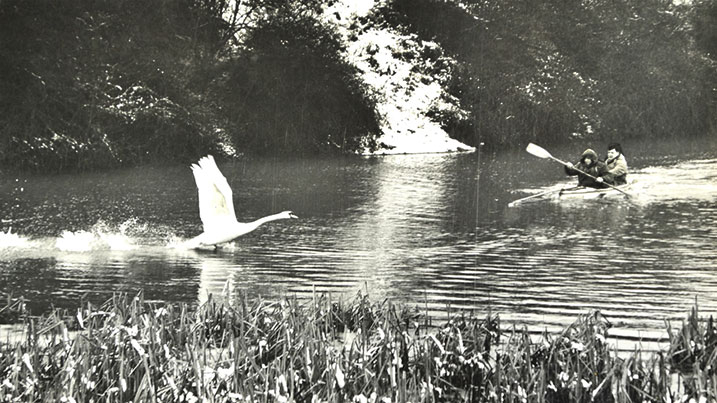
I still make regular winter visits to WWT centres, my particular favourites being Martin Mere, Welney and Caerlaverock, where the great flocks of wildfowl still excite me as much as they did 60 years ago. We must make every effort to conserve the special places for wildfowl that we have here in the UK for future generations to experience the joy of wildfowl that I have experienced over my lifetime.



